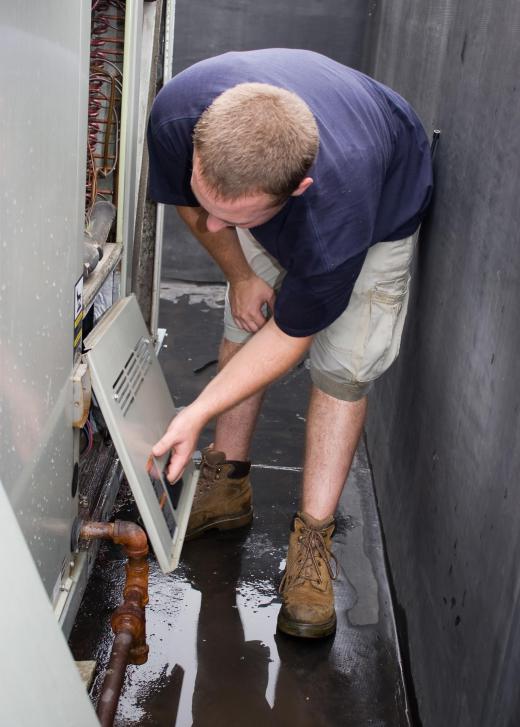An HVAC control system is a computerized mechanism used to adjust heating, air conditioning, and ventilation components within a building. It may feature manual or automatic operation, and is often customized base on the specific demands of each building. The HVAC control system can be used to turn a furnace or air conditioner on or off, or to adjust the temperature and other settings on these units. Depending on the application, these controls may also be used to adjust other types of building systems. In addition to allowing owners to easily control the systems within a building, an HVAC control system is also used to maximize performance and energy efficiency.
The standard HVAC control system relies on controllers, or actuators, built into various components within the system. Using a central computer system, operators can direct each actuator to turn on the furnace or air conditioner or adjust the temperature of each. This system also allows users to open or close dampers within HVAC ducts, or adjust ventilation fans using the same computer software. Some simply display information about the HVAC system on the computer screen, while others feature built-in alerts that signal operators of the need to change settings.

More advanced HVAC control systems also include sensors that help to automatically adjust these components with minimal input from the operator. Sensors on the heating or cooling unit operate just like a household thermostat, and adjust the operation of the unit to meet pre-programmed temperature settings. Others make automatic adjustments based on air quality needs or the presence of smoke, fire, or excess humidity.

An HVAC control system is often incorporated into a larger building automation system (BAS). These systems not only regulate heating and cooling, but also control lighting, security systems, communication, and fire control. They utilize software that allows operators to control the system while on site, or from remote locations. This web-based control makes it easy for maintenance personnel to address emergencies or changes at any time and from anywhere in the world.
Buildings equipped with an HVAC control system offer many advantages over those not equipped with these systems. Easy-to-use controls allow building staff to maximize performance, comfort and productivity for workers and occupants. They also help to improve energy efficiency and cut heating and cooling costs. An improvement in energy efficiency also helps to reduce fossil fuel consumption, which offers many benefits to the environment.
